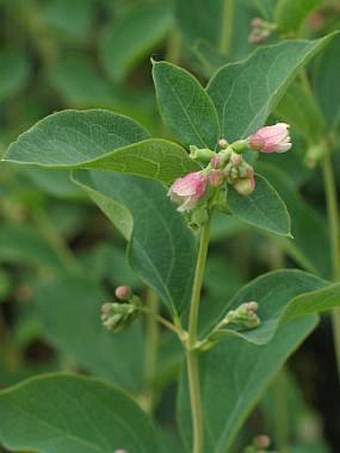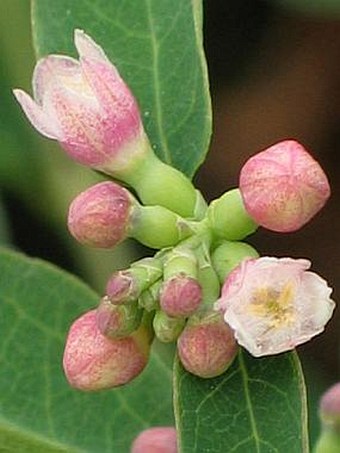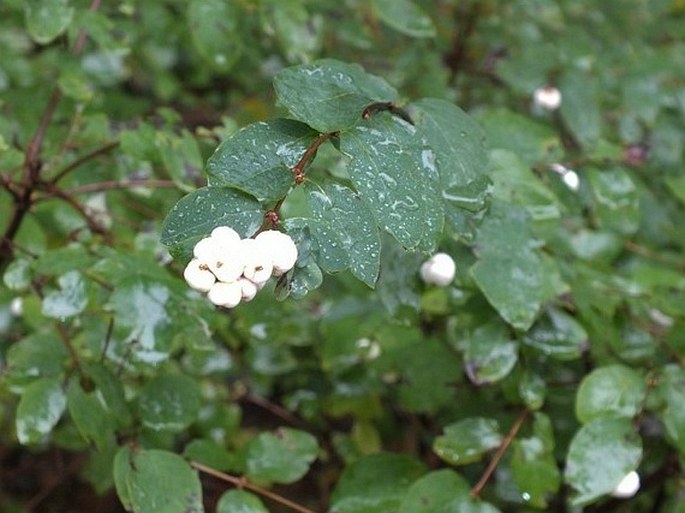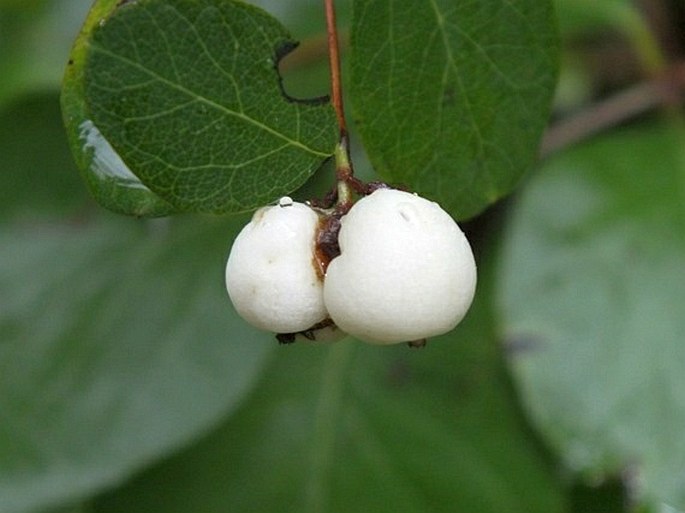Syn.: Lonicera alba (L.) Druce, Vaccinium album L., Xylosteon album (L.) Moldenke
Family: Caprifoliaceae Juss.

Distribution: North American species found mainly in the western part of the continent, from Northwest Territories through most of Canada with exception of the extreme east. In US found from Washington to Northern Dakota and Minnesota and going south to New Mexico and California; sporadically in Utah, absent in Nevada and Arizona. Marginally occurring in the eastern states bordering Canada.
Ecology: Moist wooded areas in contrast to Symphoricarpos occidentalis growing in open drier grasslands. Blooms in May and July.
Description: Erect, much-branched shrub, 30–150 cm high, often colonial, from creeping rhizome. Old stems dark greyish brown with cracking bark, shiny branchlets, twigs thin, delicate. Leaves opposite, deciduous, 20–40 × 10–30 mm, elliptic to oval, obtuse at base and tip, margins smooth or undulate, underside pubescent, petioles less than 10 mm. Inflorescence 2–3-flowered, occasionally up to 10, terminal and from upper leaf axils, flowers pink to whitish, widely bell-shaped, 5–7 mm long, short pedicels, corollas fused at bases into tubes with 5 lobes (not spreading), stamens shorter than corolla lobes. Fruit is a berry, white, 6–12 mm, nearly globose, edible but strong laxative. Some berries persist through winter.
Note: The Blackfoot people used the branches as a broom.




These images were taken in Canada, Alberta, Bragg Creek (by Karel Bergmann, August 2013) Czechia, Bohemia, Praha-Písnice (by Jindřich Houska, July 2006).


